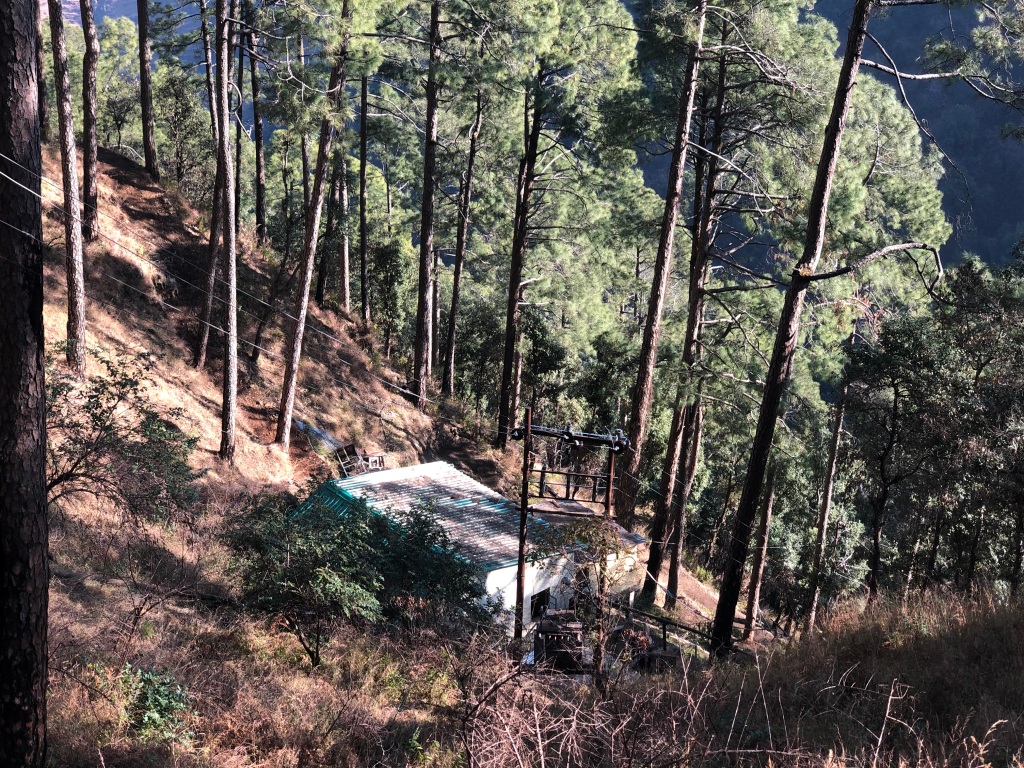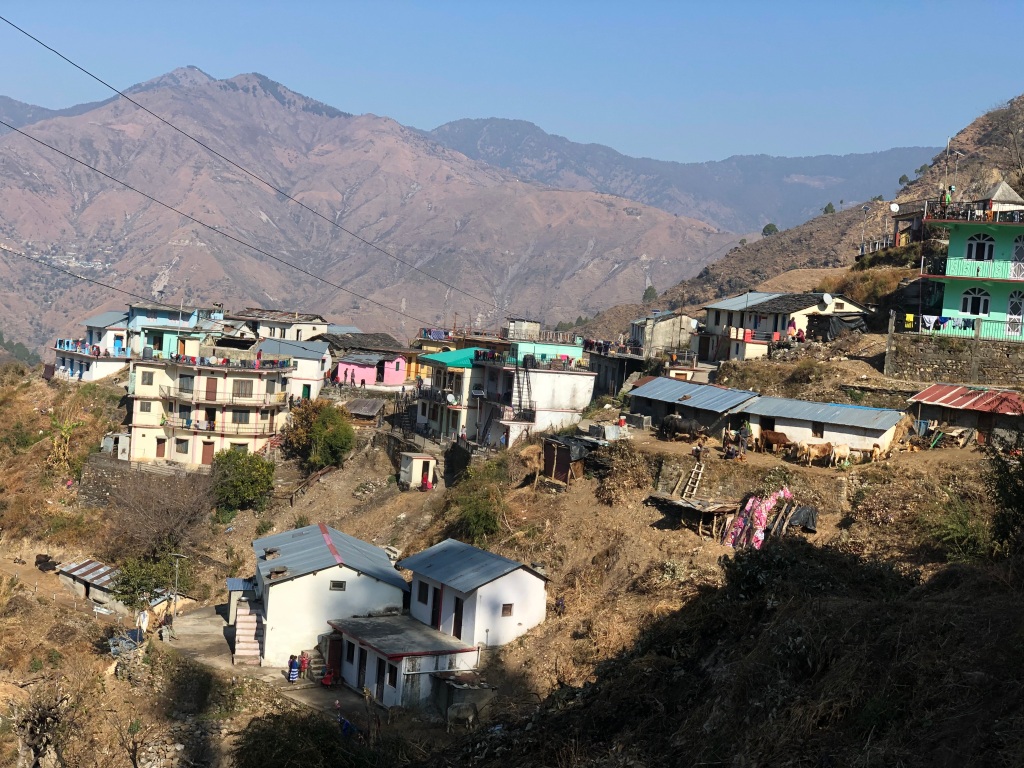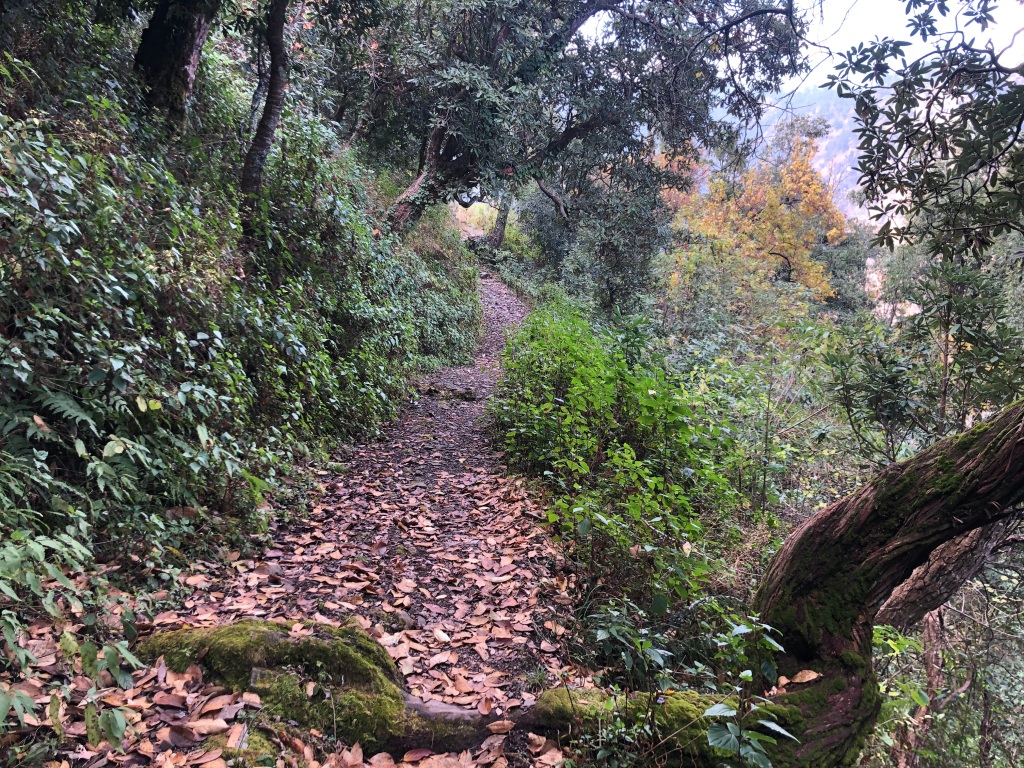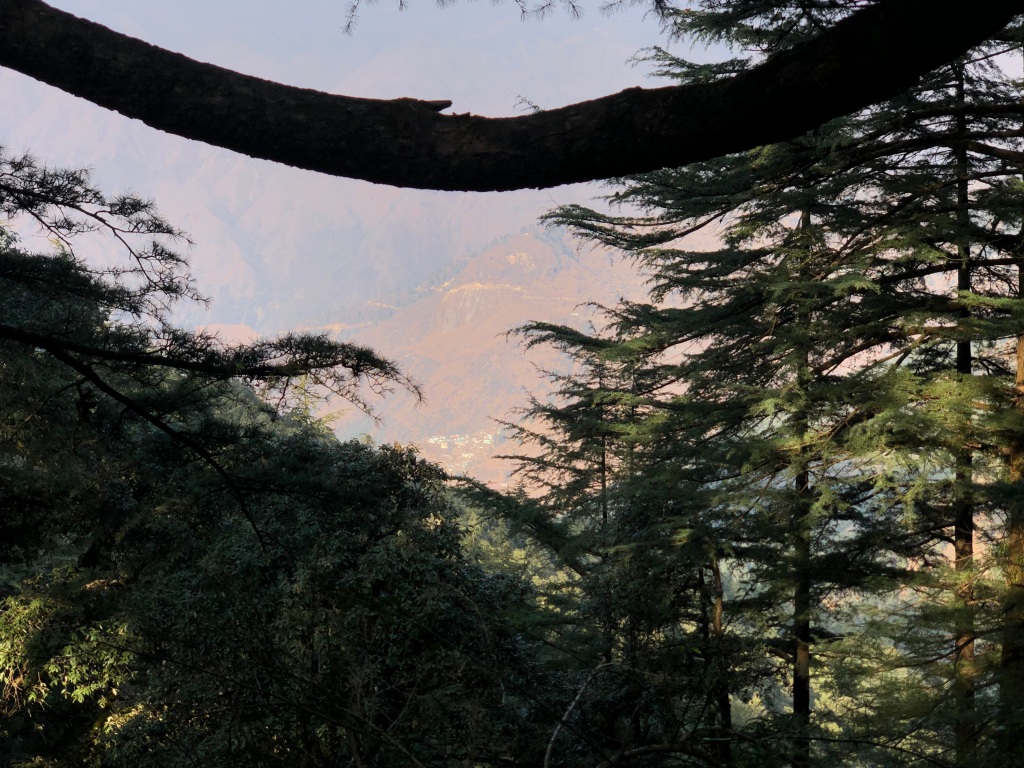
It was somewhere around mid-January this year when it had poured all night. The sky was overcast with dark clouds, completely obscuring the view of the Mussoorie hills from the valley below. The next morning, the mountains unleashed themselves under the cover of a thick white blanket of snow, transforming familiar landscapes into a winter wonderland.
The day after snowfall, the sky was clear and crisp, with the sun in its pristine golden glow, spreading the warmth across. Trees and leaves were surprisingly refreshed, and revitalized, and the tiny raindrops perched on the leaves flickered under the influence of sun. The air was thick and cold, filled with a fresh earthly aroma, and the silence around was broken by the buzz of the insects (especially the Cicadas) and by the chirps and hums of numerous bird species.

For me, it was an excellent opportunity to undertake a short hiking trip and to well absorb these happenings. And so, on a fine and clear Sunday morning of January winter, I decided to clamber up to Landour, an old and sleepy part of Mussoorie, famous for its colonial era structures and for being home to some of the celebrated writers such as Ruskin Bond, Stephen Alter and Ganesh Saili.
I drove from Dehradun until Lal Tibba, which is the highest point of the Landour Cantonment area, almost a kilometre ahead of the famous Char Dukan. As I stepped out of the vehicle, the chilly and damp air around caught me off-guard. It took me a few minutes to adjust to the weather, but with the gathering sun under the embrace of a cloudless blue sky, and the sheer grandeur of the landscape that lay in-front of me, the worries quickly faded away into oblivion.

It was now time to undertake an interesting hike that would start from Landour and end here too albeit via a different route. The initial path (until an age-old cemetery built during the colonial period) was cobblestoned whose edges still had traces of the recent snowfall. The path glinted when stroked by the falling rays. On the sides, the blades of grass appeared stiff in shades of emerald. At the cemetery, I took a narrow mud path that cantered down the hill in a crisscross manner. Surprisingly, the path was not wet and provided a perfect grip for my heavy boots. The trees consisting of oak, deodar, and pine, were aspiring to reach the boundaries of the blue sky, and in return, the sunlight filtered through the branches and leaves and created blotched patterns on the forest floor.
This hike is divided into 3 tracks.
| Track 1 | Cemetery (Landour) to Kolti Village | Downhill | 6.5 kms walk | 2 hours |
| Track 2 | Kolti Village to Jabarkhet | Uphill | 5 kms walk | 2.5 hours |
| Track 3 | Jabarkhet to Sister’s Bazar (Landour) via Woodstock School | Uphill | 1 km walk |30 mins |

Let us delve into these tracks in detail.
Track1 :- Cemetery (Landour) to Kolti Village

The gradient on this trail was steep. While the path was clearly laid out, one needed to be careful as the trail navigated through the thick of forests with no human settlements enroute until Kolti. What you witness is only 3 water tanks, each almost equidistant from the other. These water tanks pull up water from a stream at the bottom of the hill and supply to the entire landour cantonment area. The entire path zigzags through the mountain, snaking down to the base, passing through these water tanks.
Enroute, I had a perfect sighting of a Himalayan Woodpecker, perched vertically on the main trunk of a Pine tree, scouting for its meal which usually consists of insects, tree saps, seeds, and nuts. Except the rattling sound of the working motor (at these 3 water tanks), throughout this stretch there was no other cacophony of human activity, not even a single sighting of them. It was nature and its magic that was at play here in the wilderness.

At Water Tank-1 , I crossed-over to the other side via a small concrete bridge over a brook. From here the path flattened and was now an easy and straight walk through the thick of forests. Soon, in the far distance, the silhouette of the houses at Kolti could be easily traced. As I trod further, soft murmurs of the village folks working in the fields below, mooing of the cows and bleating of the goats could be distinctly heard.

Kolti is a buzzing village of about 60 houses and of over 500 inhabitants. A new concrete road between Kempty Fall and Thatyur is under construction, and it is proposed to pass through Kolti. Yes, by the end of this year, Kolti will have a road connectivity and the villagers were quite upbeat about this proposition.
I took a short break here, chit chatted with the locals, absorbed the earthy scent of thatched roofs and smells that wafted from nearby homes. It evoked memories of simple times and close-knit communities, living in peace and away from the constant drone of traffic and the never-ending chatter of the city life.
It was now time to embark on the next leg of this trek.
Track2 :- Kolti Village to Jabarkhet
It was a winding path through the thick of forests, but the gradient was much comfortable than the one I experienced in the previous track. Come spring season, and this stretch would be a paradise with entire landscape ablaze with colours, a brilliant tapestry of wildflowers would be at display. For now, though the foliage was thick and vivid, there was something missing just like that one crucial link in an unsolved puzzle.

As I trod over the path strewn with dried leaves and gravel, they crunched under the influence of my boots, resulting in a screeching sound that was enough to break the silence around. The only other sound that I heard during this stretch was that of the ruffling of leaves when intermittent bursts of wind would appear from nowhere. Clouds started to suddenly occupy the blue sky and I had to accelerate my pace.

While it’s a 5-6 km trail, it’s a fairly easy walk and everyone would thoroughly enjoy it including those attempting a hike for the 1st time. Soon, I arrived at Jabarkhet which is also famous for housing a private nature reserve. I took a quick break at this café that served authentic Garhwali cuisine.
Track3 :- Jabarkhet to Sister’s Bazar (Landour)

It was now time to make the final push back to Landour. From Jabarkhet, I took a narrow uphill path that ran along the boundary of the famous Woodstock school. About 500 metres ahead and 15 minutes later, I found myself at a concrete and flat road. I was nearing Sister’s Bazar, one of the ends of Landour. Sister’s bazar, a quaint little neighbourhood, is always draped in slumber and its inhabitants have perhaps eternally surrendered themselves to the soothing embrace of silence. As I walked closer to it, in the far distance and down below, Kolti made another appearance, a cluster of houses glistening as sun made its way through a slit in the clouds above.

I ended my trail at the famous Landour Bakehouse, one of the finest bakeries I have ever visited anywhere. And this bakehouse has its own history of about 100 years, but that would be a story for some other time.
I hope you enjoyed reading this post.
Your readers become your trekking companions reading the blogs.. Such detailing. Briliiant write-up.
LikeLiked by 1 person
thanks a lot for the encouraging words 🙂
LikeLiked by 1 person
Stunning photographs and beautiful writing. Love your description of Sister’s Bazar, “always draped in slumber and its inhabitants have perhaps eternally surrendered themselves to the soothing embrace of silence.” Wish I could have made it to Landour on my recent trip to Dehradun, but you have brought it home to me in this post.
LikeLiked by 1 person
I am glad you found it worth a read. Hope you are able to visit Landour/Sister’s Bazar on your next trip here. and perhaps get a chance to immerse yourself in the atmosphere that the inhabitants of landour experience on a daily basis 🙂
LikeLiked by 1 person